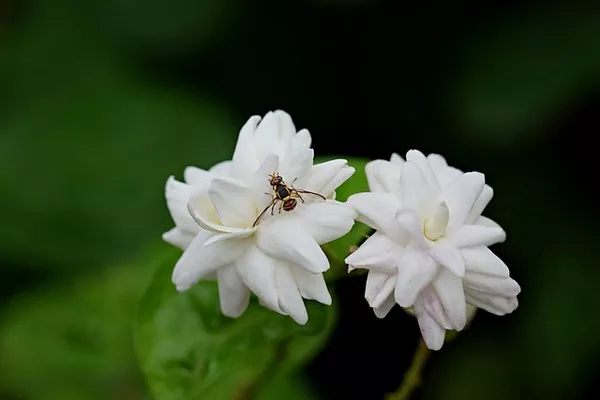Flowers, with their exquisite colors and delicate shapes, are nature’s masterpieces. Whether they come from a special occasion, a garden, or a cherished memory, preserving these blooms allows us to relive those moments and extend their beauty. One of the most effective methods for preserving flowers is using silica gel. In this comprehensive guide, we will delve into the art of using silica gel to dry flowers, ensuring that they retain their vibrant colors and intricate forms for years to come.
Understanding Silica Gel
Before we embark on the journey of drying flowers, let’s get acquainted with our primary tool, silica gel. Silica gel is a desiccant, a substance that absorbs and retains moisture from its surroundings. Its remarkable ability to extract moisture without damaging delicate structures makes it an ideal choice for preserving flowers.
Gathering Your Materials
To get started, you’ll need a few materials:
Silica Gel: You can find silica gel at craft stores, garden centers, or online. Ensure it is specifically labeled as “flower-drying silica gel.”
Airtight Container: Choose a container with an airtight seal, such as a plastic or glass container with a secure lid.
Flowers: Select fresh, unblemished flowers at their peak bloom. Flowers with thicker petals work best for this method.
Pruning Shears: Sharp shears or scissors for cutting and trimming the flowers.
Microwave or Oven (Optional): While not mandatory, having access to either of these appliances can expedite the process.
Preparing the Flowers
Proper preparation is essential for successful flower drying:
Select the Right Flowers: Choose flowers that are at their prime but not overly mature. The petals should be free from blemishes and damage.
Trim Stems: Cut the stems to the desired length, typically around one to two inches from the base of the flower.
Remove Excess Leaves: Pluck any leaves that might touch the petals when placed in the drying container.
Use a Desiccant-Friendly Flower: Flowers with thick petals, like roses or lilies, work best with silica gel as they hold their shape during drying.
Layering Flowers with Silica Gel
Now that your flowers are prepared, it’s time to start the drying process:
Fill the Container: Begin by pouring a layer of silica gel into the bottom of your airtight container. Ensure it’s deep enough to accommodate the largest flower you plan to dry.
Position the Flowers: Gently place the prepared flowers on top of the silica gel layer. Be mindful of spacing to prevent petals from touching.
Cover with Silica Gel: Carefully pour more silica gel over the flowers, ensuring each petal is completely covered. Patience is key here; sprinkle slowly to avoid damaging the blooms.
Seal the Container: Close the container’s lid tightly to create an airtight seal. This step is crucial, as it allows the silica gel to work its magic by absorbing moisture from the flowers.
Drying Time
The drying time will vary depending on the type of flower and the thickness of its petals. Here are some general guidelines:
Monitor Regularly: Check the flowers every few days to gauge their progress. Delicate flowers may take one to two weeks, while thicker-petaled varieties could take several weeks.
Testing for Dryness: To determine if the flowers are dry, gently touch a petal. If it feels crisp and papery, they are ready. If it still feels pliable, continue the drying process.
Uncovering the Dried Flowers
Once the flowers are thoroughly dried, it’s time to reveal their preserved beauty:
Remove from Silica Gel: Carefully remove the dried flowers from the silica gel. Gently shake or brush off any excess gel, taking care not to damage the petals.
Finishing Touches: If you notice any remaining silica gel particles on the flowers, use a soft brush to remove them.
Protect with Hairspray (Optional): To enhance the longevity of your dried flowers and protect them from moisture, consider spraying them with unscented hairspray.
Displaying Your Dried Flowers
Now that your flowers are impeccably preserved, it’s time to showcase them:
Shadow Boxes: Display dried flowers in shadow boxes to create stunning wall art or keepsakes.
Frames: Place individual dried flowers between sheets of glass or transparent frames for an elegant look.
Arrangements: Incorporate dried flowers into dried flower arrangements or wreaths for a touch of timeless beauty.
Decorative Items: Use dried flowers to embellish candles, photo albums, or handmade cards for personalized gifts.
Storage Tips
To ensure the longevity of your dried flowers, consider these storage tips:
Keep Them Dry: Store dried flowers in a cool, dry place to prevent any residual moisture from causing damage.
Avoid Direct Sunlight: Sunlight can cause the colors to fade over time, so store your dried flowers away from direct sunlight.
Use Sealed Containers: If you plan to store them for an extended period, place your dried flowers in an airtight container.
Conclusion
Preserving the ephemeral beauty of flowers through drying is a rewarding and artistic endeavor. With the right materials and techniques, you can create stunning dried flower arrangements that evoke cherished memories and add a touch of natural beauty to your surroundings. Silica gel, with its desiccant properties, is your trusted companion in this journey, ensuring your flowers remain vibrant and captivating for years to come. So, unleash your creativity, and start preserving nature’s masterpieces with the art of silica gel flower drying.


